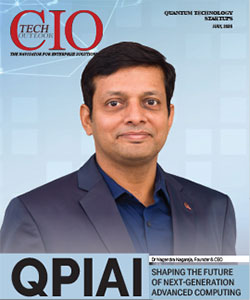CIOTechOutlook >> Magazine >> August - 2016 issue
A Digital Experience Steering the Future of Automotive Industry
By
 Enhancing Flexibility through Cloud Computing
Enhancing Flexibility through Cloud ComputingWhen looking at the benefits of cloud computing, you have to start with customer satisfaction. Customers are demanding high levels of services in return for their loyalty. By entering this new era of intelligent and sustainable technology, automakers and manufacturers will need to demonstrate and deliver real value.
Cloud computing provides other benefits such as Software as a Service (SaaS), Infrastructure as a Service(IaaS), and Platform as a Service (PaaS) that allows for self-service capabilities without having the complexities of purchasing, managing, and maintaining basic hardware and software requirements on a day-to-day basis. It also enables quicker deployment of information that helps automakers and manufacturers move past the era of siloed IT and into one that promotes collaboration with partners, suppliers, and customers.
Cummins has effectively leveraged cloud resources to address the need for additional High Performance Computing (HPC) resources in the engineering space. We also released a handheld device which brings the ease of adjusting engine features and parameters at the very fingertips of our customers. The introduction of cloud computing also provides a centralized lens that allows us to track what is happening or what will happen at each step of the manufacturing, distribution, and supply chain processes.
Although cloud computing enhances flexibility, improves access to data, and reduces cost, it must be balanced with the appropriate level of information security. As noted by the recent data losses and breaches, it is important to critically assess cloud providers security capabilities, and adequately determine the data allowed to be moved outside a company’s trusted network.
Driving Business Success through Data Integration
When examining the effectiveness and proactive use of data, you have to start by integrating core business processes and technology systems that allows for timely and efficient delivery of products and services to the customer. This type of integration, better known as Enterprise
Resource Planning (ERP), streamlines the flow of data including other production-critical components through a series of interconnected applications and dashboards. By having a fully integrated ERP platform, organizations can overcome the challenge of isolated data through the use of a common architecture that improves overall performance.
Your Role as CIO
I have only been at Cummins for 18 months. My focus during this time has been on standardizing IT, restructuring IT, and building credibility with the business on the ability of IT to be a business partner in solving business problems. A few months ago, the role of the CIO changed in the reporting relationship from the Chief Administrative Officer to reporting to the President, and adding the CIO position to the Cummins Leadership Team. This change is recognition by Cummins Leadership on the important role IT plays in solving business challenges. This change allowed me to participate in developing business strategy. For example, working with the Cummins Leadership Team, and by presenting IT complexity evidence and cost evidence, together with my business partners, has helped prioritize Supply Chain strategy as a top priority.
In addition, IT is now moving to be more proactive into doing R&D on technology, and raising those opportunities to the Cummins Strategy Team on where IT can add value to the Cummins physical product offering. To date, we have been co-linked with the business on the Telematics strategy, and are beginning R&D work on how the Internet of Everything will affect our manufacturing processes.
Having worked at FedEx for 15 years, IT is critical to business strategy. Historically, IT was a back office function for manufacturing companies. This is all changing, given the rapid impacts of technology. There is a huge convergence of Engineering and IT, enabling highly competitive solutions.
Converging IT with the Business
You must speak business language first, technology language second. This can be difficult for technical CIOs, but to be a participant or enabler of business strategy, you must be able to explain your thoughts and ideas to business leaders in a way they understand.
• Talk with facts. Facts are a tremendous way for driving change.
• Build relationships. You must build relationships across the business, at all levels.
• Build an IT scorecard. If you have one, you can manage your organization to it.
• Leverage your vendors. They can help you with your visioning and strategy, and be a strong partner.
Optimizing Operations through IoT
The Internet of Things allows automakers and manufacturers to incorporate major technology trends such as telematics, Machine-to Machine, and cloud computing to track and manage opportunities to optimize operations, productivity, service excellence and customer satisfaction.



